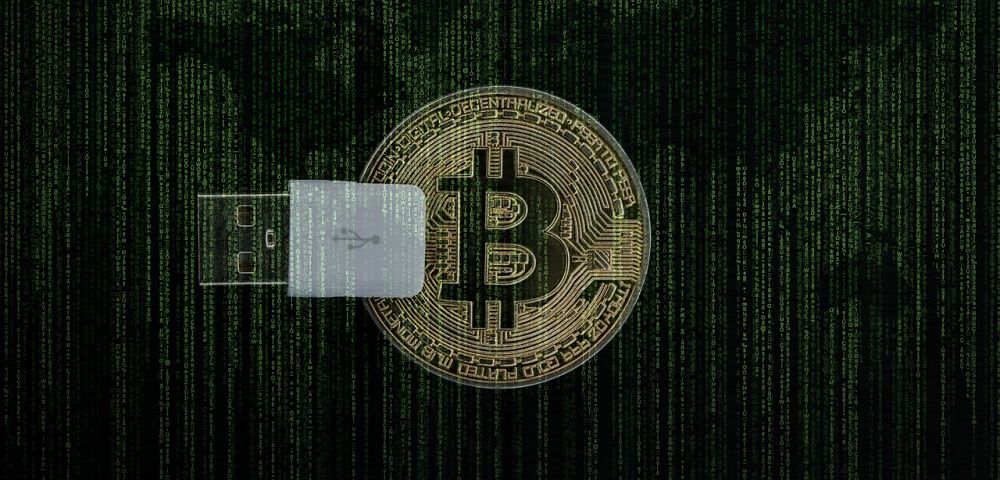Some Options for Safely Storing Your New Cryptocurrency
One of the main challenges of investing in cryptocurrency is making sure it is safely stored once it’s purchased.
Prior to examining storage options, it’s a good idea to review the critical importance of maintaining personal data inviolate. Unlike traditional banking, an accidental transfer of cryptocurrency to a wrong account means the coin is gone for good — it cannot be recalled.
The responsibility of storage and management and all subsequent details lays in the hands of the purchaser — putting him or her in complete control of every aspect of the financial transaction; so great caution and prudence is essential.
Basic Crypto Storage
The basic storage of cryptocurrency is not that hard to understand. To make this a little clearer it might help to compare a crypto account with a more traditional banking account.
Traditional Banking Systems
In regular banking transactions the money is stored under the care of one particular bank. Money can be sent into and out of the bank account — using a routing number, personal details, and, of course, the account number itself. With this information the consumer is then authorized to transfer funds in a number of ways — such as in person at the bank, online, or by telephone. There is normally a transaction fee, charged by the bank (anywhere from fifteen to thirty-five dollars, depending on the type of account being accessed), and the transfer of funds will take around three business days to accomplish. When money goes abroad to another country the timing and fees are increased, sometimes substantially.
The Crypto System
In a cryptocurrency transaction the funds are put into what’s called a ‘digital wallet.’ The wallet belongs to the purchaser and no one else. There’s no middleman, no bank of any kind, involved. As in regular banking, the wallet owner can receive more funds or send funds out to other accounts, using what’s called a ‘public key.’ This public key is a variable string of numbers and letters for the receiving account and the sending account. Each wallet also has a private key. Only the owner of the wallets sees the private key, no one else. It’s similar to the username and password for an online bank account.
So with the public key of the digital wallet of the receiving party the funds can be sent immediately, just the same as with regular banking. The difference at this point between the two systems becomes apparent; transaction charges are considerably less, depending on what digital coin is being used. For instance the fee for Ethereum right now for a normal transaction is just forty cents. And the transferred funds are received immediately, in a matter of minutes — not in a matter of days.
Options for Cryptocurrency Storage
With this basic understanding of how sending and storing works, it’s time to examine the varied storage options that are currently available. They’re ranked from least secure to most secure:
The least secure exchanges include Bittrex, Coinbase, and Gemini.
A little more secure storage is offered for mobile/online wallets from Bread or Jaxx.
Good security for hardware wallets is provided by Ledger or Trezor.
And the highest security now available for offline and or paper wallets is created with MyCrypto, Walletgenerator.net, and MyEtherWallet.
The Exchange
A cryptocurrency wallet exchange is least secure because most of them are, in fact, centralized. Operated by a single unit in charge of all accounts and their security, an exchange is highly vulnerable to platform hacking — this means that all data in every single wallet can be accessed by one hacker alone or a group of hackers. Either way, personal data is then up for grabs.
Smart investors only use this type of storage in the initial planning stages of a purchase or trade.
The Mobile/Online Wallet
The mobile wallet app lets investors download from any mobile device for storage purposes. They’re good for fast transactions into another account, and are mostly used for purchasing real services and merchandise. The problem is that if the mobile device is lost or stolen the entire transaction amount could be lost for good.
Similarly, the online wallet is located in the cloud so it can be accessed from just about any and all devices. Again, this works well for the quick transaction — however, all private keys are managed by an online provider. So once again if a hacker gets in, the entire transaction could be lost. Always us a new and unique two place authentication code for this.
The Hardware Wallet
The hardware wallet is pretty secure. They use a flash drive. So even if the device is stolen there’s no way the thief can access the private key. So this is a good way to store funds for longer periods of time. Still, losing the original device means probably losing the funds unless extra security precautions are taken.
The Paper Wallet
Just like it sounds, the crypto investor using a paper wallet will have a hard copy — which should be stored in a fireproof safe. This is as secure as it gets for cryptocurrency transactions. But again, make sure that this paper trail is not exposed to prying eyes or lost. Only the investor has both public and private keys for access. If it’s lost or stolen the funds are inaccessible. Period. So making a second copy may be a good idea.
One Final Note
At this time crypto investors cannot use a single wallet for different cryptocurrencies. One wallet — one cryptocurrency. This makes things difficult when dealing in foreign exchange rates. Banks will do this automatically, but not digital wallet apps. Investors thus will need one for American dollars, one for yen, one for euros, etc.




